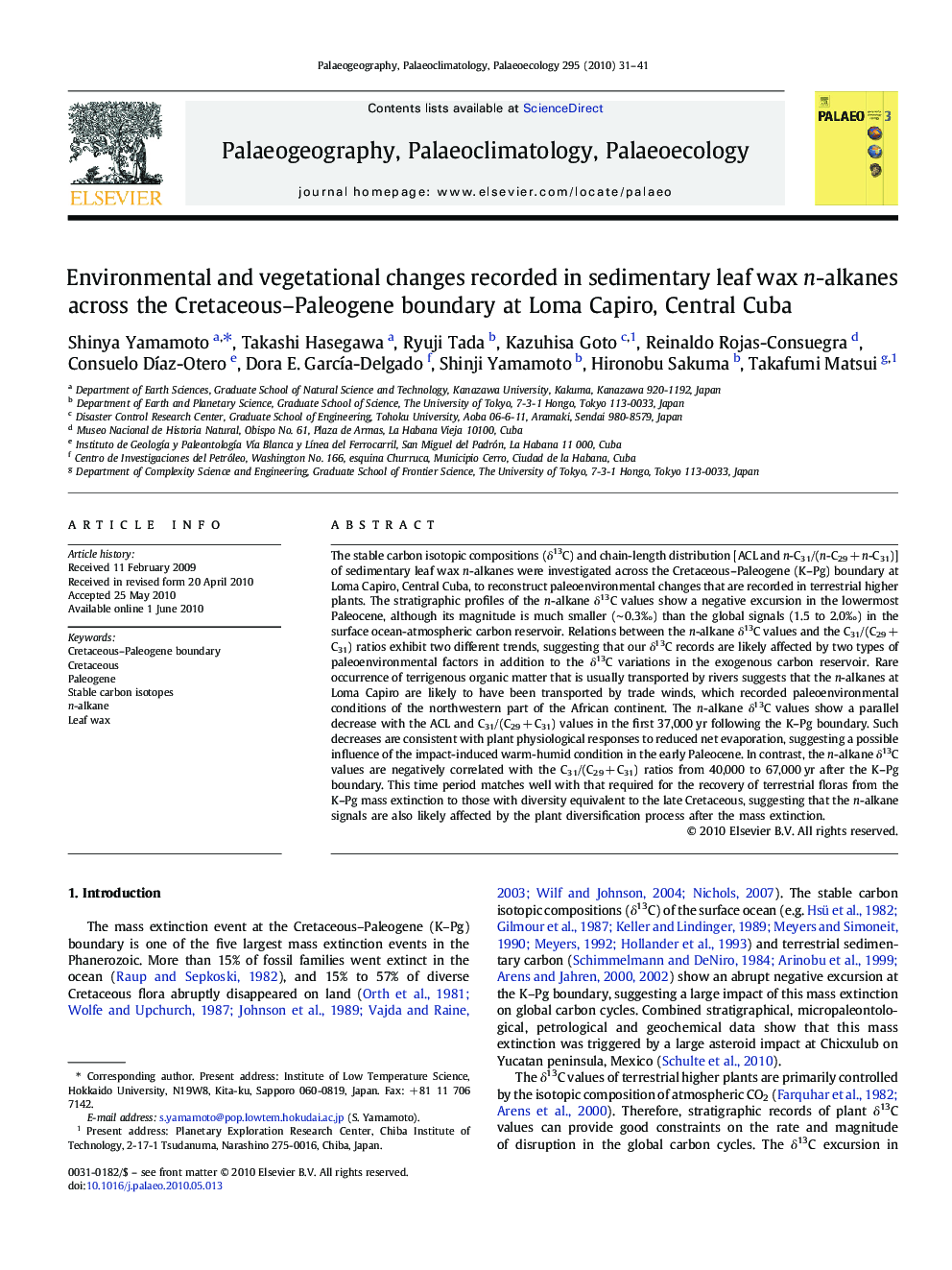| کد مقاله | کد نشریه | سال انتشار | مقاله انگلیسی | نسخه تمام متن |
|---|---|---|---|---|
| 4467625 | 1622272 | 2010 | 11 صفحه PDF | دانلود رایگان |

The stable carbon isotopic compositions (δ13C) and chain-length distribution [ACL and n-C31/(n-C29 + n-C31)] of sedimentary leaf wax n-alkanes were investigated across the Cretaceous–Paleogene (K–Pg) boundary at Loma Capiro, Central Cuba, to reconstruct paleoenvironmental changes that are recorded in terrestrial higher plants. The stratigraphic profiles of the n-alkane δ13C values show a negative excursion in the lowermost Paleocene, although its magnitude is much smaller (∼ 0.3‰) than the global signals (1.5 to 2.0‰) in the surface ocean-atmospheric carbon reservoir. Relations between the n-alkane δ13C values and the C31/(C29 + C31) ratios exhibit two different trends, suggesting that our δ13C records are likely affected by two types of paleoenvironmental factors in addition to the δ13C variations in the exogenous carbon reservoir. Rare occurrence of terrigenous organic matter that is usually transported by rivers suggests that the n-alkanes at Loma Capiro are likely to have been transported by trade winds, which recorded paleoenvironmental conditions of the northwestern part of the African continent. The n-alkane δ13C values show a parallel decrease with the ACL and C31/(C29 + C31) values in the first 37,000 yr following the K–Pg boundary. Such decreases are consistent with plant physiological responses to reduced net evaporation, suggesting a possible influence of the impact-induced warm-humid condition in the early Paleocene. In contrast, the n-alkane δ13C values are negatively correlated with the C31/(C29 + C31) ratios from 40,000 to 67,000 yr after the K–Pg boundary. This time period matches well with that required for the recovery of terrestrial floras from the K–Pg mass extinction to those with diversity equivalent to the late Cretaceous, suggesting that the n-alkane signals are also likely affected by the plant diversification process after the mass extinction.
Journal: Palaeogeography, Palaeoclimatology, Palaeoecology - Volume 295, Issues 1–2, 1 September 2010, Pages 31–41